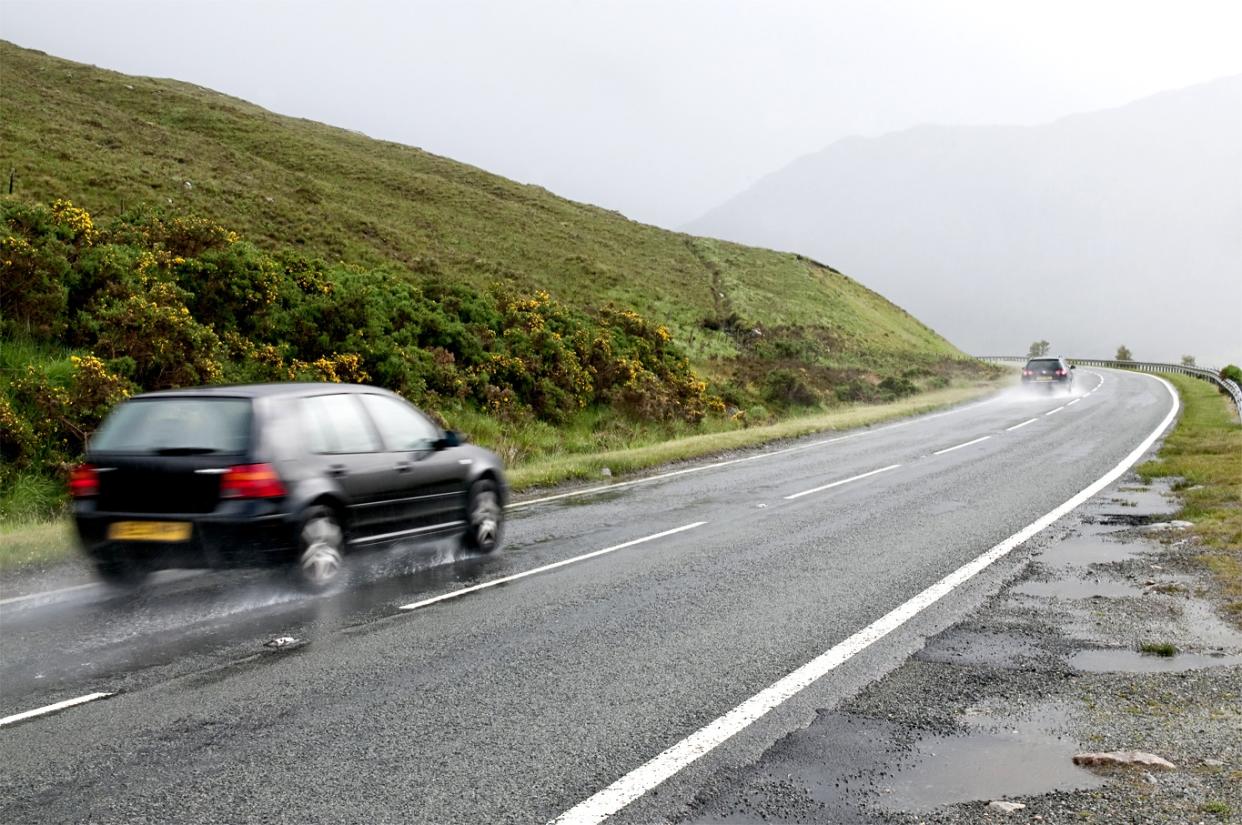How to stay safe when driving in heavy rain

Heavy rain is battering parts of the UK at the moment and with the Met Office issuing a yellow warning for the UK south of Birmingham – which will last from Wednesday morning until 6am on Christmas Eve – it looks like there’s more on the way. There’s a good chance, then, that many drivers will be facing rather damp driving conditions, to say the least.
So if you’re on the roads when the wet weather hits, how can you make sure you’re safe? We’ve got some of the key tips on how to do just that.
Should I drive at the same speed as usual?
Definitely not. It’s not a hard one to work out, but lowering your speed when driving in heavy rain makes things a whole lot safer. More water makes road surfaces slippery, which in turn affects stopping distances. As a result, you should be slowing down and leaving more space between yourself and the car in front in case they need to brake suddenly.
Can I drive without my lights on?
In heavy rain, visibility is at a premium, so you should be making sure that your lights are on to ensure that other drivers can see where you are.
⚠️ Yellow Warning updated ⚠️
Spells of heavy rain are expected across southern parts of England and Wales from Wednesday 0600 – Thursday (Christmas Eve) 0600
Latest info 👉 https://t.co/QwDLMfRBfs
Stay #WeatherAwarepic.twitter.com/vs80dPcbWH
— Met Office (@metoffice) December 22, 2020
Oh, and if you’ve got automatic lights, double-check that they’ve reacted to the weather. Many systems struggle to differentiate between the light levels when driving in rain, so they may ‘think’ that you’re driving in clear sunshine. We’d always advise manually switching them to dipped beam, just to be on the safe side.
Will trucks and lorries affect my driving in heavy rain?
Absolutely. Owing to their increased size and large wheels and tyres, lorries and trucks can kick up a lot of spray – considerably more than cars and bikes, in fact. Because of this, go carefully when passing them on the motorway and leave plenty of space when following on a single carriageway road.
Should I switch on my fog light?

Though – as the name describes – your fog light should certainly be used in heavy fog, we’d advise against switching it on when driving in heavy rain. It can stop your brake lights from being seen so effectively, so it’s well worth leaving it off on this occasion.
What if my car starts misting up?
With more rain comes more moisture and, as result, you can often find the interior of your car steaming up. It’s why we’d advise keeping your car’s air conditioning on – if it has it, of course. This will take much of the moisture out of the air and leave you with a clear screen.
If you haven’t got air conditioning, then try opening your side windows a crack to let a small amount of fresh air in. Of course, don’t open your window entirely as you’ll end up rather damp.
Should I take extra care when driving through deep water?

Definitely. There is absolutely zero point in risking both your safety and your car by trying your luck with deep water. Even if you need to get out of the vehicle and walk up to the water to see how deep it is, it’s better than drowning your car and getting stranded.
If it looks too deep, then we’d advise taking a different route. However, if you deem it to be an okay level, then take things slowly and progress through the water at a constant speed. Stay in a low gear with high revs and make sure that you don’t slow down – this could cause you to get stuck.
It will turn increasingly 🌧️ wet across the southern half of the UK this evening as outbreaks of #rain and drizzle edge slowly north.
The north of the UK will fare better with a mix of clear spells and a few showers pic.twitter.com/mWdfQDQdbE
— Met Office (@metoffice) December 22, 2020
Once you’re out of the other side, we’d advise leaving the car standing for a moment to allow any water to drain away from areas like the wheels and brakes. Plus, once back up and running, check your brakes to make sure that they’re operating properly, too.
As with all things, if you’ve got any doubt – leave it out. If the water looks too deep or you don’t feel comfortable, try a different route. It’s by far the easiest and safest option.


